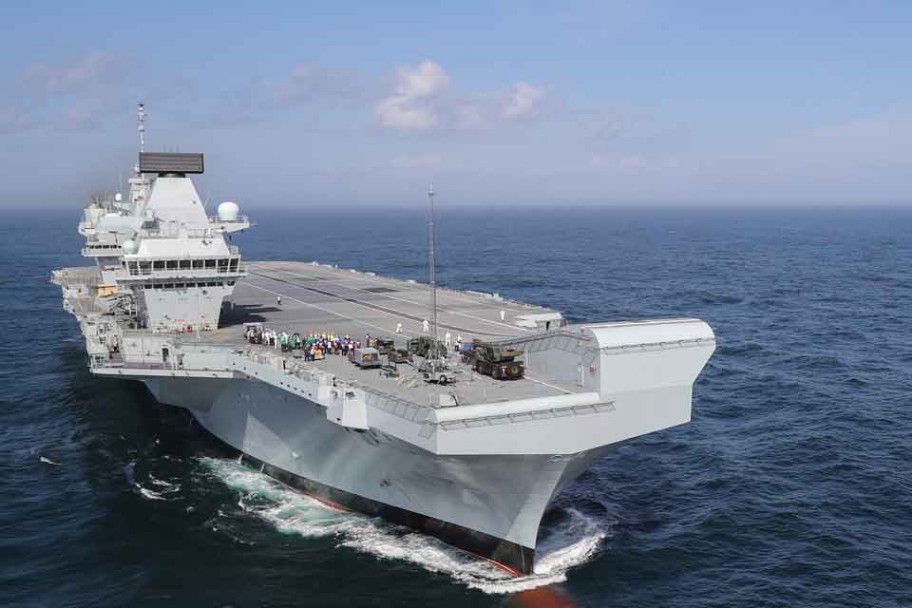
Aircraft carrier HMS Queen Elizabeth has passed her rigorous dry dock inspection with flying colours and is leaving her birthplace once again…
The 65,000-tonne future Fleet Flagship has spent the last six weeks back in the cavernous dock in Rosyth where she was first pieced together as engineers inspected her hull and conducted routine maintenance.
During her time out of the water, 284 hull valves were changed, both rudder blades were removed and cleaned, her sea inlet pipes were inspected, all sacrificial anodes were replaced, and a renewed coat of anti-foul paint was applied to the ship’s bottom. The huge port and starboard anchors and cables were also laid out along the length of dock to allow them to be inspected.
The docking period was a mandatory requirement and its successful completion means HMS Queen Elizabeth should not need to dock down again for another six years.
Head of Marine Engineering onboard, Cdr Mark Hamilton said: “It’s the first time that such a short docking period has taken place with a Royal Navy ship of this size. It’s real testament to the great working relationship forged between the MOD and industry to make this such a success. We’ll now carry the concept forwards to future docking periods, as well as to those of our sister ship HMS Prince of Wales”.
The maintenance was completed on time after the ship entered dry dock ahead of schedule, despite an initial delay to entering the basin because of bad weather.
After a phased exit from Rosyth, into the Firth of Forth before passing once again under the Forth Bridges, the ship will conduct a period of sea trials and training in preparation for her deployment to the east coast of the USA later this year. ‘WESTLANT 19’ will include ‘operational testing’ with UK F-35B Lightning II fighter jets, following on from last’s year’s ‘developmental tests’ with US trials jets.